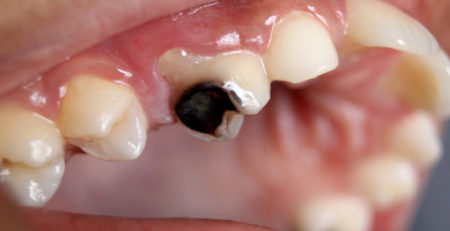How Dental Crowns Restore Functionality
In the realm of modern dentistry, dental crowns play a crucial role in restoring both the functionality and aesthetics of damaged teeth. Whether due to decay, trauma, or structural weakness, dental crowns offer a versatile solution that addresses various dental issues effectively. By encapsulating the entire visible portion of the tooth, a dental crown not only enhances chewing ability but also restores tooth shape and size, improves appearance, protects weak teeth, strengthens teeth post-root canal, prevents decay, supports dental bridges, and corrects bite alignment issues.
Enhancing Chewing Ability
When a tooth is significantly damaged or weakened due to decay or fracture, chewing food can become difficult and painful. A dental crown restores the tooth by encasing it completely, providing a strong outer layer that enables normal chewing function. By mimicking the natural tooth structure, crowns allow patients to bite and chew comfortably without sensitivity or discomfort. This restoration of chewing ability is particularly beneficial for patients who have difficulty enjoying their favorite foods due to dental issues.
Restoring Tooth Shape and Size
One of the primary functions of dental crowns is to restore the original shape and size of a damaged tooth. Teeth can lose their natural form due to decay, fractures, or extensive dental work such as root canal therapy. When a tooth is significantly altered, it may affect the overall alignment of the bite and compromise oral function. A dental crown effectively addresses these concerns by encapsulating the entire visible portion of the tooth, restoring its natural shape and size seamlessly.
The dental clinic carefully selects materials for crowns based on the specific needs of the patient. Porcelain crowns, for example, are highly preferred for their natural appearance and durability. Once placed, the crown not only enhances the tooth’s aesthetics but also ensures that it fits harmoniously with the surrounding teeth, maintaining proper alignment. This restoration of tooth shape and size is crucial not only for aesthetic reasons but also for functional purposes, enabling patients to speak and chew without discomfort or difficulty.
Improving Tooth Appearance
Beyond functionality, dental crowns significantly improve the appearance of damaged or discolored teeth. Whether due to trauma, intrinsic stains, or extensive dental work, crowns can cover imperfections and create a uniform, aesthetically pleasing smile. Using modern materials like porcelain or ceramic, dental clinics can customize crowns to match the shade and translucency of surrounding teeth perfectly. This aesthetic enhancement restores not just the tooth’s appearance but also the patient’s overall facial aesthetics.

Protecting Weak or Damaged Teeth
Teeth weakened by decay, large fillings, or fractures are vulnerable to further damage if left untreated. Dental crowns provide a protective barrier around such teeth, preventing cracks and fractures from worsening. By encapsulating the tooth entirely, crowns distribute the forces of chewing evenly, reducing the risk of structural damage. This proactive approach preserves the natural tooth structure and prevents the need for more extensive treatments such as extractions or root canals in the future.
Strengthening Teeth After Root Canal Treatment
Following root canal therapy, a tooth can become brittle and prone to fracture. Placing a dental crown over the treated tooth reinforces its strength and durability. This protective covering seals the tooth against bacteria and further infection while restoring its functionality. Crowns after root canal treatment ensure that patients can bite and chew comfortably without compromising the integrity of the treated tooth. This preventative measure prolongs the lifespan of the tooth and avoids complications that could arise from leaving it unprotected.
Preventing Further Dental Decay
Dental crowns serve as a proactive measure to prevent dental decay in vulnerable teeth. Teeth with large fillings, cracks, or structural weaknesses are more prone to bacterial infiltration and subsequent decay. By placing a crown over such teeth, a dental clinic effectively seals off these vulnerable areas and reduces the risk of decay.
During the crown placement procedure, the dentist ensures meticulous preparation of the tooth to eliminate any existing decay or damage. The crown is then carefully fitted over the tooth to create a seamless seal that prevents bacteria from entering. This preventive approach not only safeguards the tooth from future decay but also preserves its natural structure and functionality. Patients benefit from enhanced oral health and reduced dental complications, promoting a healthier smile for years to come.
Supporting Dental Bridges
Dental bridges are used to replace missing teeth by anchoring artificial teeth (pontics) to adjacent natural teeth or dental implants. Dental crowns play a pivotal role in supporting these bridges by securely covering and protecting the abutment teeth.
At the dental clinic, the process begins with the preparation of the abutment teeth that will support the bridge. Crowns are then placed over these teeth to provide a stable foundation for the bridge structure. The crowns not only hold the pontics in place but also distribute chewing forces evenly across the abutment teeth, preventing strain or damage. This support ensures the longevity and functionality of the dental bridge, allowing patients to enjoy restored dental aesthetics and oral function.
Correcting Bite Alignment Issues
Misaligned bites can lead to various dental problems, including jaw pain, uneven wear on teeth, and compromised oral function. Dental crowns offer a viable solution by correcting bite alignment issues and restoring proper occlusion.
During the treatment planning phase at a dental clinic, bite analysis is conducted to identify any alignment discrepancies. Crowns may be recommended to adjust the height, position, or shape of specific teeth, thereby optimizing the bite relationship. Once placed, the crowns facilitate harmonious contact between upper and lower teeth, promoting a balanced bite and alleviating strain on the jaw joints. This correction of bite alignment issues enhances overall comfort and functionality, ensuring a healthier oral environment.
Discover How Dental Crowns Restore Functionality with Lumina Dental: Transform Your Smile Today!
If you’re ready to regain the full functionality and beauty of your smile, Lumina Dental is here to help. Our experienced team understands the importance of dental health and the impact it has on your overall well-being. Whether you need to enhance chewing ability, restore tooth shape and size, improve tooth appearance, or address any other dental concerns, we are committed to providing personalized care and top-notch service. Don’t wait to experience the benefits of dental crowns—contact us today to schedule your consultation and take the first step toward a healthier, more confident smile. Contact us now and let Lumina Dental restore your smile to its fullest potential.











